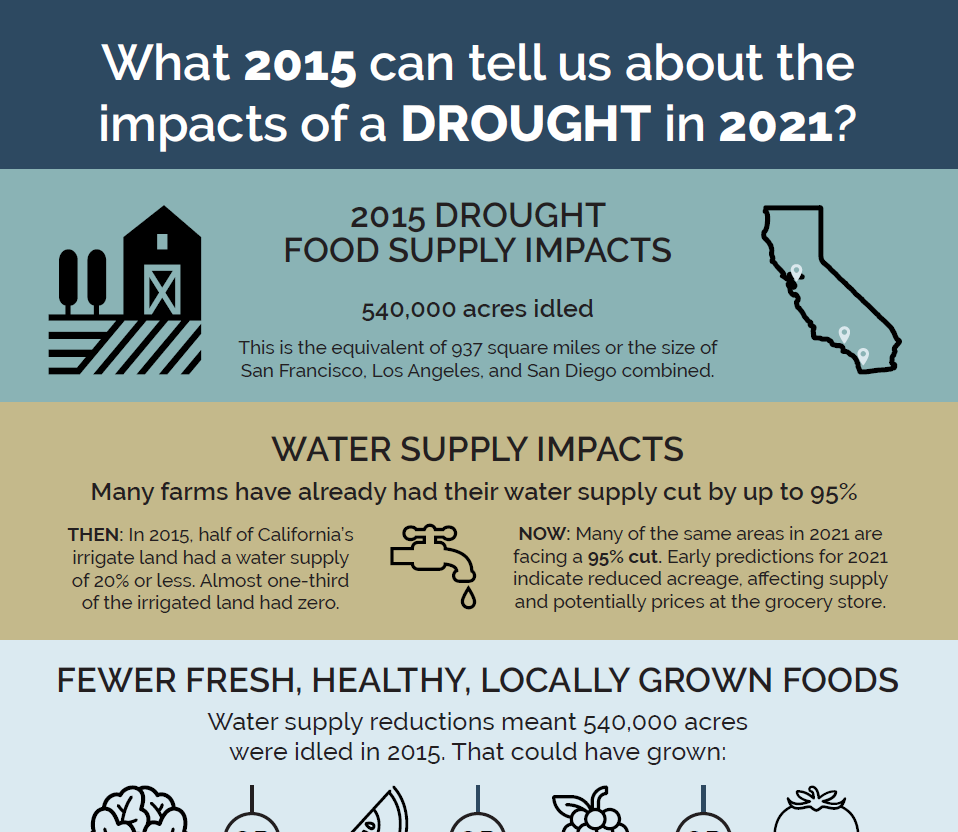Info Graph – What can the 2015 drought tell us about the impacts of a drought in 2021? Taking a look back at a similar water year can help us understand what might be in store for us through the rest of this year and possibly beyond. California is in a critically dry year, the […]
STATEMENT: Voluntary Agreement on Water Represents the Future and Deserves Prop 68 Funding
STATEMENT: Voluntary Agreement on Water Represents the Future and Deserves Prop 68 Funding By Mike Wade, Executive Director California Farm Water Coalition California has always prided itself on cutting-edge ideas. It is the place others turn to for new solutions to old problems. We are currently faced with a choice to continue that tradition of innovation […]
Bold Actions for People, Farms, and the Environment
Bold Actions for People, Farms, and the Environment The United States Bureau of Reclamation is commencing a process aimed at modernizing the operations of the federal Central Valley Project (CVP). For decades, the approaches to protecting the fish and wildlife dependent on the Bay-Delta watershed and estuary have been species-by-species and stressor-by stressor. Those approaches […]
The solution to pollution is not, in fact, dilution.
The solution to pollution is not, in fact, dilution. While a catchy phrase, scientific and other experts generally agree that the “solution to pollution is dilution” approach leaves much to be desired. Relying on dilution to solve the Delta’s water quality problems is at best wasteful of this precious resource, and at worst destructive to […]
Salmon numbers down but there’s hope in the floodplain
Salmon numbers down but there’s hope in the floodplain There have been valid concerns for years about the declining fish populations in California. While the immediate forecasts for the year aren’t much improved, there is reason for hope. Projects now underway are showing great promise in helping to turn around declining salmon numbers. The Nigiri […]
